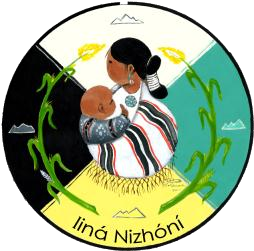Attach 6 Study Info
Attach 6 Study Info.doc
Prospective Birth Cohort Study Involving Environmental Uranium Exposure in the Navajo Nation
Attach 6 Study Info
OMB: 0923-0046
 Navajo
Birth
Cohort
Study
Navajo
Birth
Cohort
Study
Helping Your Baby
and Future Generations
To Grow in Beauty
If you are a pregnant woman or thinking about becoming pregnant, please consider joining us in this important study.
The Navajo Birth Cohort Study will be accepting volunteers willing to participate in the collection of environmental and biological samples during and after their pregnancy.
The goal of the study is to better understand the relationship between uranium exposures and birth outcomes and early developmental delays on the Navajo Nation. The data from the study may be used to improve future birth outcomes and services.
• Are you pregnant and 14 to 45 years old?
• Have you lived on the Navajo Nation for at least 5 years?
• Will you deliver at one of these facilities?
• Chinle Comprehensive Health Care Facility
• Gallup Indian Medical Center
• Northern Navajo Medical Center (Shiprock)
• Tséhootsooí Medical Center (Ft. Defiance)
• Tuba City Regional Health Care Corporation
• Are you willing to have your child involved in this research for her or his first year?
If you answered yes to these questions, you are eligible to participate in this research project.
Please call 1-877-545-6775 for more information and to find out how you can participate
This research is a joint project of:
• DiNEH Project (University of New Mexico Community Environmental Health Program and Southwest Research
and Information Center) • Centers for Disease Control and Prevention/Agency for Toxic Substances Disease
Registry • Navajo Area Indian Health Service •Navajo Nation Division of Health
Approved and monitored by
• Navajo Nation Human Research Review Board NNR-10.323
• University of New Mexico Human Research Review Committee HRPO# 11-310
Funding from CDC/ATSDR: U01 TS000135 Principal Investigator Johnnye Lewis Ph.D.,D.A.B.T.
Artwork by Sandy Ramone

When |
Mom |
Dad |
Baby |
Research Team |
At Enrollment |
Consent |
Consent |
Mom consents for baby |
Provide information and explain study for informed consent |
|
Urine and blood samples provided during clinic visit |
Urine and blood sample |
|
Collect samples |
|
First survey |
Survey |
|
Conduct survey |
|
Home assessment and environmental sampling |
Home assessment and environmental sampling |
|
Set up for collection of environmental sampling |
|
|
|
|
|
At Birth |
Urine and blood samples and medical record review |
|
Cord blood, urine, and meconium samples; medical record review |
Review of medical record for previous pregnancies, prenatal history for current pregnancy, labor and delivery information; collection of blood and urine samples |
|
|
|
|
|
2 months |
Second survey; repeat home assessment and environmental sampling if mother moved during pregnancy |
|
Assessment of growth, progress, and home environment*; medical record review; blood collection (finger or heel stick) |
Administer questionnaire and refer to Growing in Beauty (GIB) if any possible developmental concerns identified; review baby’s medical record |
|
|
|
|
|
6 months |
Survey on infant feeding activities |
|
Assessment of growth, progress, and home environment*; urine collection |
Administer questionnaire, collect samples, refer to GIB if needed |
|
|
|
|
|
9 months |
Survey on infant feeding activities |
|
Assessment of growth, progress, and home environment* |
Administer questionnaire; refer to GIB if needed |
|
|
|
|
|
12 months |
Follow-up survey on infant feeding and parenting activities |
|
Assessments of growth, progress**, home environment*; blood collection (heel or finger puncture) and urine sample |
Administer both questionnaires, collect samples; refer to GIB if needed; review baby’s medical record |
*At 2, 6, 9, and 12 months, growth will be assessed by measurements such as length and weight; progress by a screening
questionnaire to assess baby’s communication, gross and fine motor skills, problem solving and personal social skills.
**At 12 months, we will also assess observed and spoken information, and verbal expression.
| File Type | application/msword |
| File Title | Slide 1 |
| Author | MDowns |
| Last Modified By | CTAC |
| File Modified | 2013-02-13 |
| File Created | 2013-02-13 |
© 2025 OMB.report | Privacy Policy